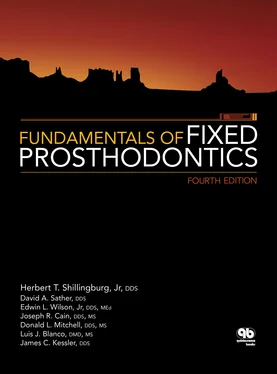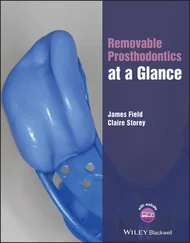Another type of cemented restoration that has gained considerable popularity in recent years is the all-ceramic laminate veneer , or facial veneer ( Fig 1-5 Fig 1-5 A laminate veneer is a thin layer of porcelain or cast ceramic that is bonded to the facial surface of a tooth with resin. Fig 1-6 The components of a fixed partial denture.
). It is used on anterior teeth that require improved esthetics but are otherwise sound. It consists of a thin layer of dental porcelain or cast ceramic that is bonded to the facial surface of the tooth with an appropriate resin.
The fixed partial denture is a prosthetic appliance that is permanently attached to remaining teeth or implants and replaces one or more missing teeth ( Fig 1-6 Fig 1-6 The components of a fixed partial denture.
). In years past, this type of prosthesis was known as a bridge , a term that has fallen from favor 1,2and is no longer used.
A tooth or implant serving as an attachment for a fixed partial denture is called an abutment . The artificial tooth suspended from the abutments is a pontic . The pontic is connected to the fixed partial denture retainers, which are extracoronal restorations that are cemented to or otherwise attached to the abutment teeth or implants. Intracoronal restorations lack the necessary retention and resistance to be used as fixed partial denture retainers. The connectors between the pontic and the retainer may be rigid (ie, solder joints or cast connectors) or nonrigid (ie, precision attachments or stress breakers) if the abutments are teeth. As a rule, only rigid connectors are used with implant abutments.
A thorough diagnosis of the patient’s dental condition must first be made, considering both hard and soft tissues. This must be correlated with the individual’s overall physical health and psychologic needs. Using the diagnostic information that has been gathered, it is then possible to formulate a treatment plan based on the patient’s dental needs, mitigated to a variable degree by his or her medical, psychologic, and personal circumstances.
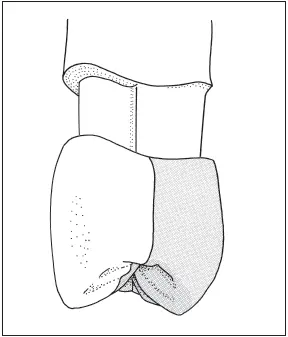
Fig 1-1A full veneer, full coverage, or complete crown covers the entire clinical crown of a tooth. The example shown is a metal-ceramic crown.
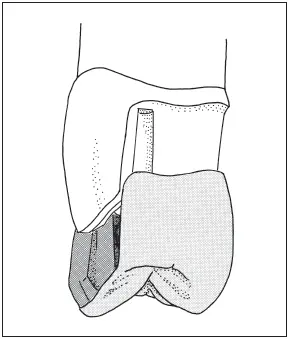
Fig 1-2A partial veneer or partial coverage crown covers only portions of the clinical crown. The facial surface is usually left unveneered.
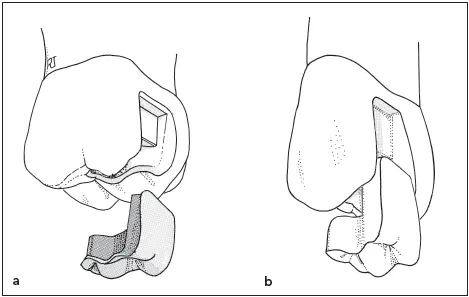
Fig 1-3Inlays are intracoronal restorations with minimal to moderate extensions made of gold alloy (a) or a ceramic material (b).
There are five elements to a good diagnostic work-up in preparation for fixed prosthodontic treatment:
1 Health history
2 TMJ and occlusal evaluation
3 Intraoral examination
4 Diagnostic casts
5 Full-mouth radiographs
It is important that a good history be taken before the initiation of treatment to determine if any special precautions are necessary. Some elective treatments might be canceled or postponed because of the patient’s physical or emotional health. It may be necessary to premedicate patients with certain conditions or to avoid medication for others.
It is not within the scope of this book to describe all the conditions that might influence patient treatment. However, there are some whose frequency or threat to the patient’s or office staff’s well-being is significant enough to merit discussion. A history of infectious diseases, such as serum hepatitis, tuberculosis, and human immunodeficiency virus (HIV)/AIDS, must be known so that protection can be provided for other patients as well as office personnel. There are numerous conditions of a noninfectious nature that also can be important to the patient’s well-being.

Fig 1-4An onlay is an intracoronal restoration with an occlusal veneer.
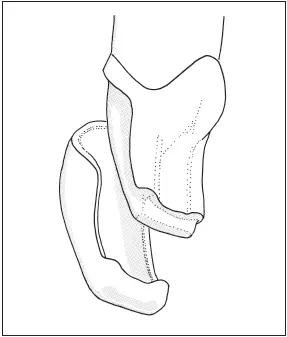
Fig 1-5A laminate veneer is a thin layer of porcelain or cast ceramic that is bonded to the facial surface of a tooth with resin.

Fig 1-6The components of a fixed partial denture.
The patient should be asked what medications, prescribed or over-the-counter, are currently being taken and for what purpose. 3It is important to be aware that an estimated 25% of the population is taking some type of herbal product. 4All medications should be identified and their contraindications noted before proceeding with treatment. The patient should be questioned about current medications at each subsequent appointment to ensure that information on the patient’s medication regimen is kept up to date.
If a patient reports a previous reaction to a drug, it should be determined whether it was an allergic reaction or syncope resulting from anxiety in the dental chair. If there is any possibility of a true allergic reaction, a notation should be made on a sticker prominently displayed in the patient’s record so that the medication is not administered or prescribed. Local anesthetics and antibiotics are the most common allergenic drugs.
The patient might also report a reaction to a dental material. Impression materials and nickel-containing alloys are leading candidates in this area. It is imperative that the dentist not engage in any type of improvised allergy testing to corroborate the patient’s recollection of previous problems. It is possible to initiate a life-threatening anaphylactic reaction by challenging the patient’s immune system with an allergen to which he or she has been previously sensitized.
Patients who present with a history of cardiovascular problems require special attention. Hypertension affects nearly 50 million Americans. 5Thirty percent of those with high blood pressure (HBP) are not aware of having the condition; only 59% of them are being treated for it; and only 34% have their blood pressure controlled to recommended levels. 6Based on these statistics, it is probable that dentists see numerous patients with undetected or uncontrolled HBP, who are prime candidates for disastrous cardiovascular events. Therefore, dentists should check blood pressure of all patients at the first appointment and at subsequent visits. No patient with uncontrolled hypertension should be treated until the blood pressure has been lowered.
The 7th Report of the Joint National Committee on Prevention, Detection, Evaluation, and Treatment of High Blood Pressure (JNC-7) has revised guidelines that simplify blood pressure classification. 6There are two categories of hypertension:
Читать дальше
